People often get confused between bar tack & box stitch. Cause when you hear the name, it kinda sounds similar, isn’t it? But that’s not the case! There are sky to ground differences between bar tack vs box stitch. How? Well,
Bar Tack Vs Box Stitch
A bar tack is a zigzag stitch used to reinforce areas like pocket openings, while a box stitch is a square-shaped stitch often used for securing the corners of patches or hems, providing strength and stability
Not clear? No worries, I won’t leave you hanging. Let’s discuss their difference in detail. between bar tack vs box stitch.
At a glance:
- The main difference between bar tack and box stitch is their straight level.
- Arrowhead tack & crow’s foot tack is similar to bar tack stitch.
- Bar tack is stronger than box stitch sewing.
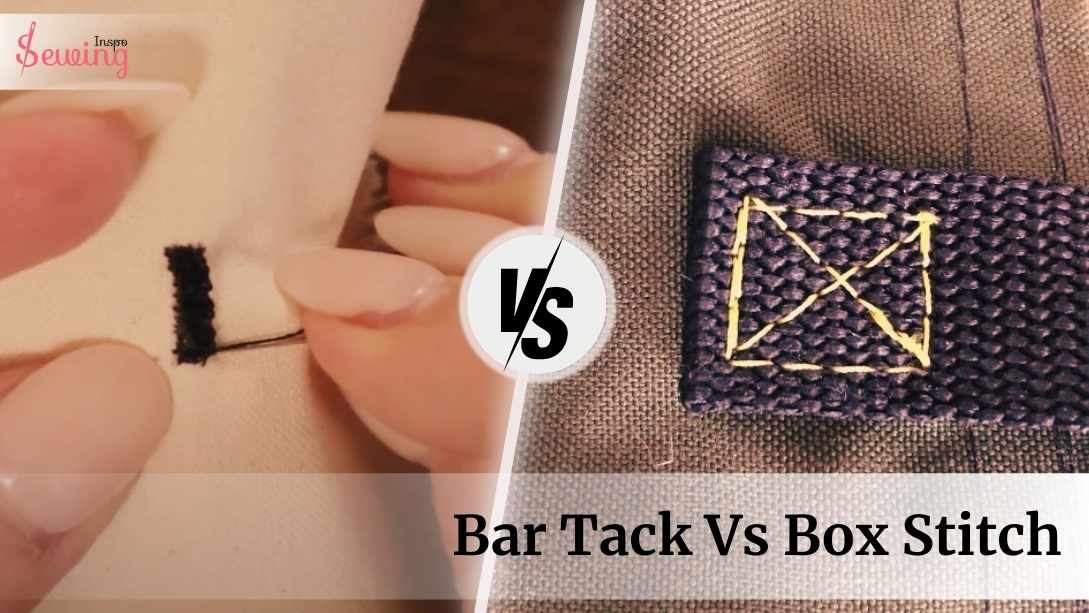
Table of Contents
Bar Tack Vs Box Stitch: Key Difference
Both stitches are for straightening, yet so different. Basically, bar tack is a tight zigzag stitch used for small reinforcements. At the same time, the box stitch forms a square or rectangle for larger, sturdier reinforcement.
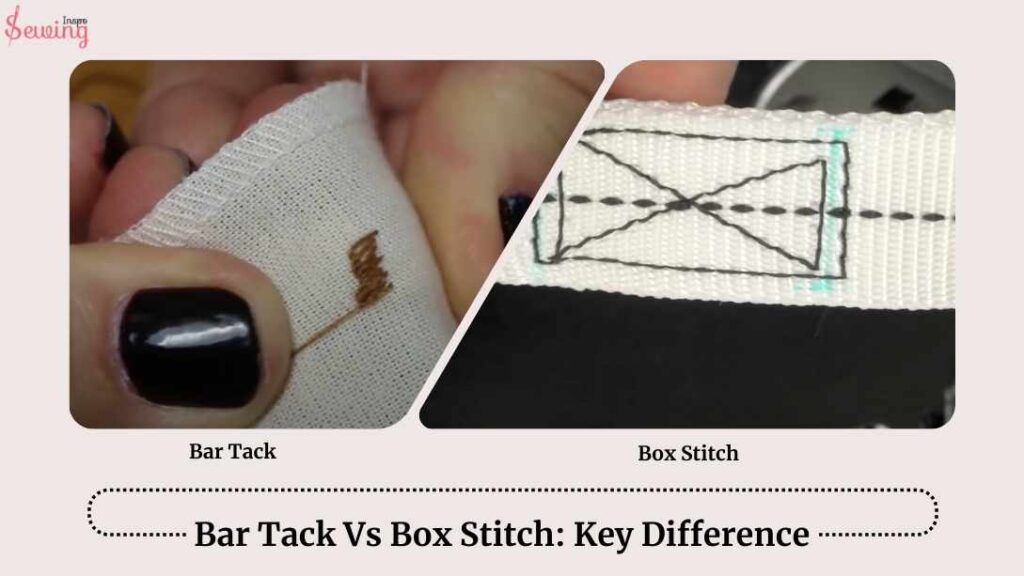
Talking about their differences like that won’t clear up your confusion. First, you have to learn them individually. So, let’s start with the meaning of sewing stitches.
What Is Box Stitch?
The box stitch involves looping thread around the edges of 2 pieces of material to create a square or box-shaped pattern and secure them together. It is one of the simple types of tacking stitch but is super strong. It is also called box x stitch.
Box stitch enhances the look along creates a strong base.
It gets its name because, well, it looks like a little box! You weave the cord or thread around the edges, crossing it over itself in this cool crisscross pattern. It’s perfect for joining two pieces of fabric together, giving you a strong and clean-looking seam allowance.
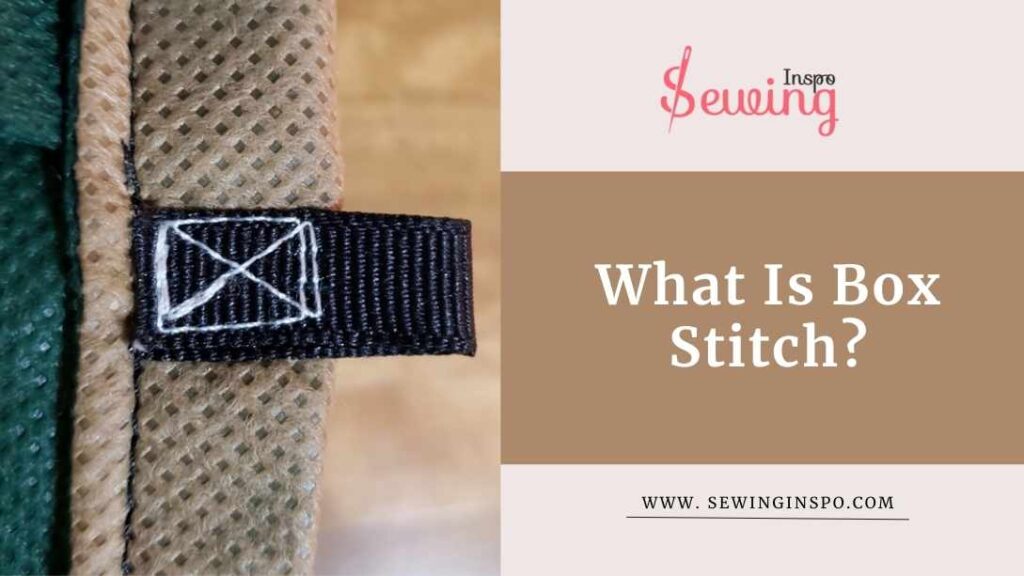
Where Is The Box X Stitch Commonly Used?
The Box X stitch is usually used for reinforcing seams in spots that take a lot of stress, like the corners of pockets, belt loops, or even bag straps.
Basically, anywhere fabric gets pulled and tugged a lot, the Box X stitch. It keeps everything from tearing apart. So, it adds both strength and style to your sewing projects.
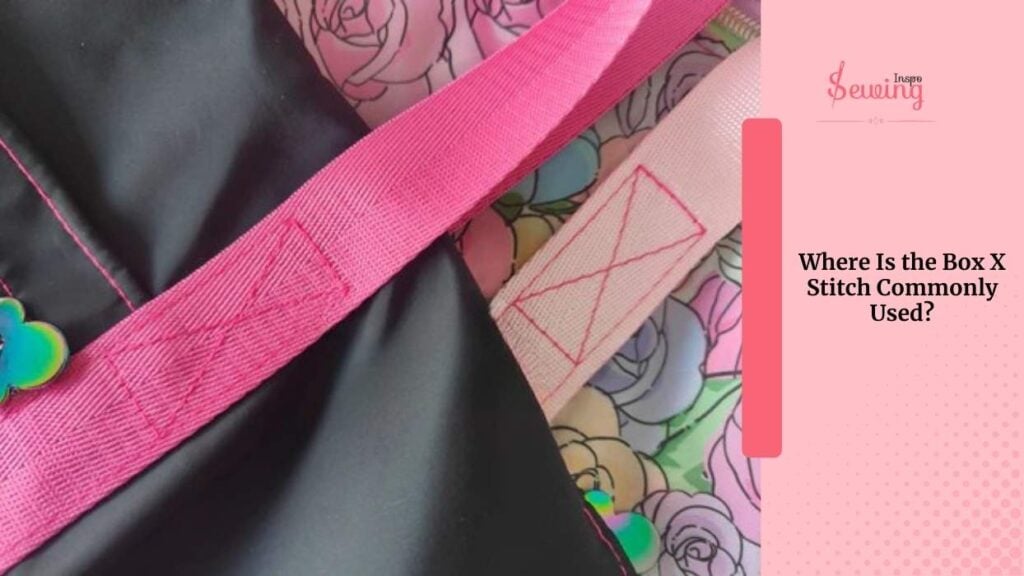
Box Stitch Pattern

If you wanna know how this box stitch sewing looks, then look at this box stitch pattern. You can try this box stitching pattern.
What Is Bar Tack?
Bar tack is made by sewing a series of closely spaced zigzag stitches across a short section, creating a thick bar of thread. It’s pretty easy to do bar tack stitch by hand. That’s why you will see bar tacking mostly everywhere.
It is a strong, reinforced stitch used to strengthen areas of fabric that are under a lot of stress, like the corners of pockets, belt loops, or buttonholes. Bar tack basically creates a stronghold of stitches.
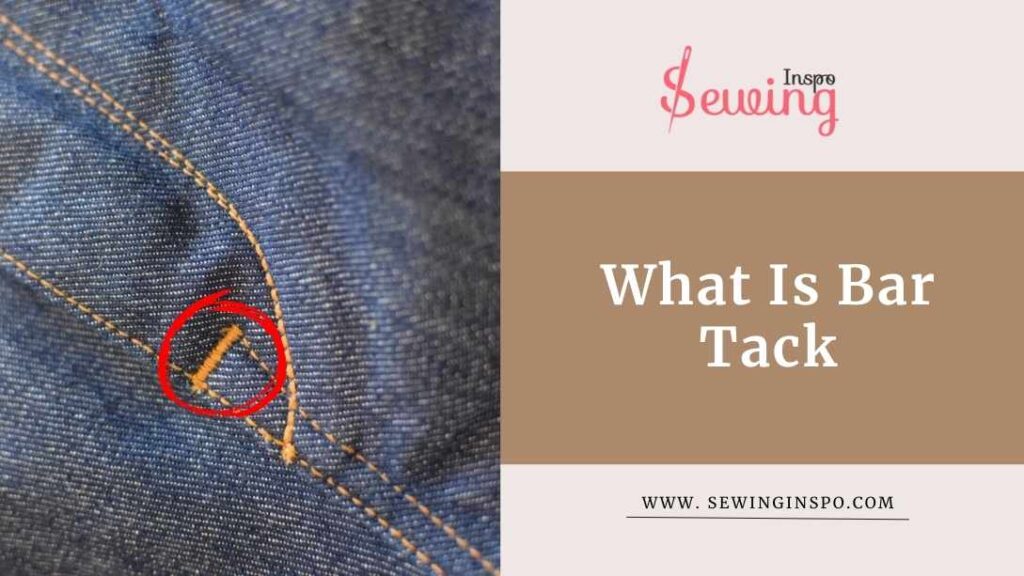
You’ve probably seen it on jeans, those little stitched bars at the edges of pockets or within tacking stitch images. Bar tacks are there to keep the fabric from tearing when you’re stuffing things in your pockets or tugging on belt loops. Pretty handy, right?
If you wanna see bartack stitching, then take a peck at your denim.
I think you can now tell the difference between bar tack and box stitch. Since you’re here to clarify your doubts, I won’t let you clear your doubts as your own. Here is the key difference between them:
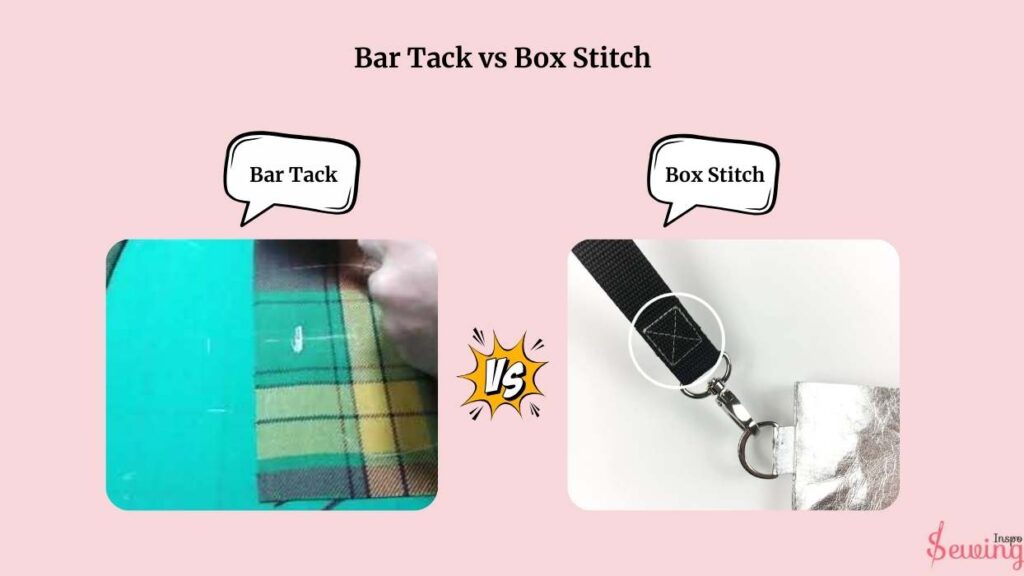
| Feature | Bar Tack | Box Stitch |
| Purpose | Bartack stitching Reinforces high-stress areas like pockets and loops. | Box stitch sewing Joins two edges or creates a decorative, sturdy seam |
| Appearance | A bartack stitch is a dense zigzag stitch in a short, straight line | Square or box-shaped pattern from criss-crossing |
| Common Uses | Bar Tacking stitch is normally used in Denim pockets, belt loops, buttonholes, backpacks | Leather projects, paracord crafts (bracelets, keychains) |
| Strength | A straight stitches Can withstand tensile stress up to 50-100 lbs on average | Typically withstands tensile stress up to 25-50 lbs |
| Stitch Lenght | ½ to ¾ inch long stitch length | 3-4 inch long in hand sewing |
| Average Stitch Count | 20-40 stitches over 1 cm (depending on fabric thickness) | Usually 4 stitches per square or side, depending on the pattern |
| Method | Tight zigzag rows of stitching in a straight bar formation | Weaving cord or heavier threads around in a box-like pattern |
| Tools Required | Sewing machine (often industrial), heavy-duty thread | Needle and thread or cord (leatherwork, paracord) |
| Time to Complete | 5-10 seconds (machine-stitched) | 5-10 minutes (hand-stitched for leather/paracord projects) |
| Durability | Very durable for high-stress points (80-90% strength retention) | Durable for most medium-stress areas (50-70% strength retention) |
| Decorative Aspect | Sewing bar tack Mainly functional, minimal decorative purpose | More decorative, often the highlight of paracord/leather projects |
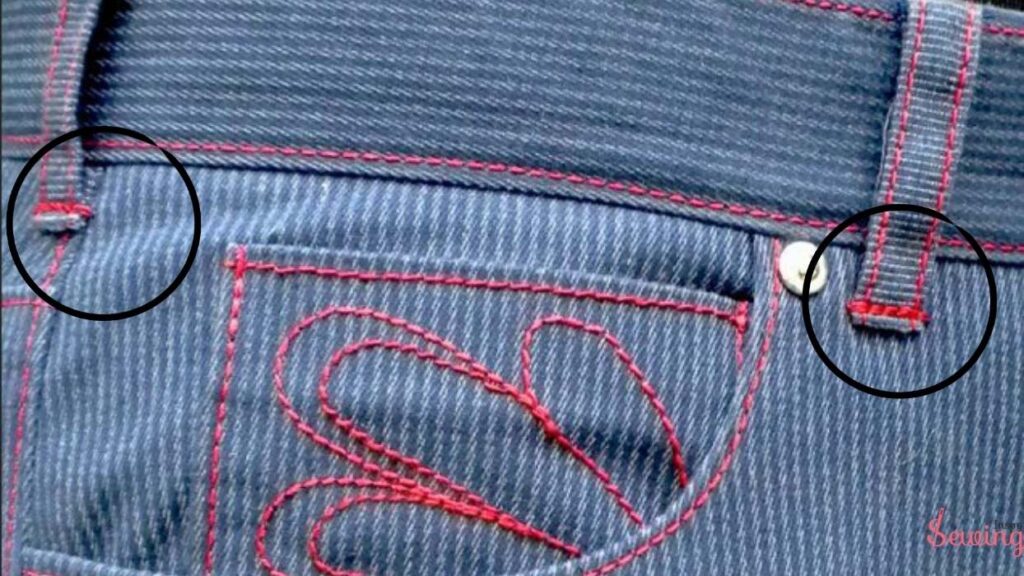
So, the main difference between bar tack vs box stitch is their look. Bar tack looks like a long bar, and box tack looks like a box.
Bar Tack Vs Box Stitch What Is Similar?
Bar tacks and box stitches are similar in that they are both used to strengthen fabric in areas that experience a lot of stress. Both stitches are also used in pocket corners and belt loops.
Not just that,
They both help prevent tearing and add durability to garments. Both techniques are commonly used in sewing to reinforce seams in high-stress points, ensuring the fabric holds up under pressure.
Is A Box Stitch Strong Than Bar Tack?
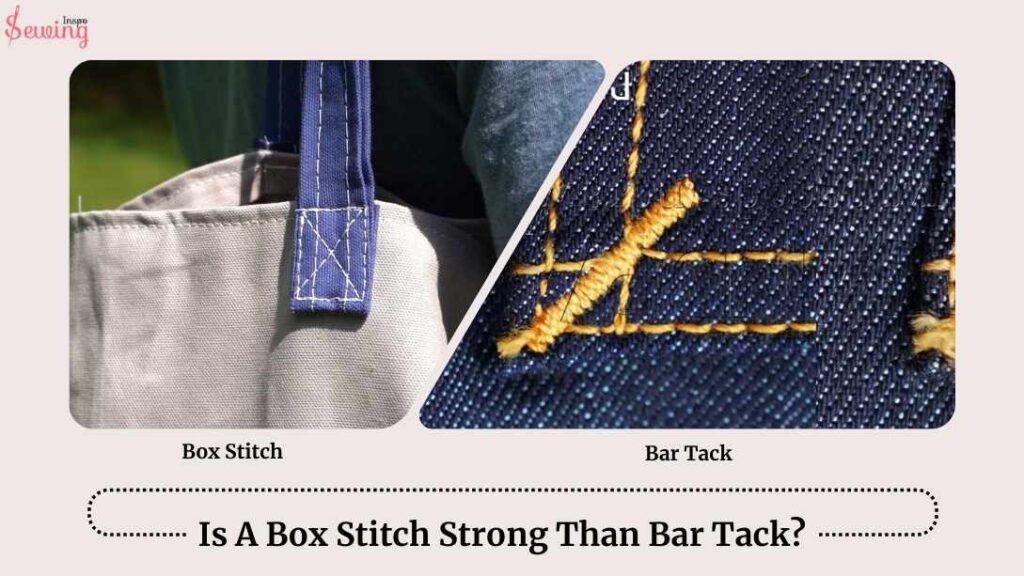
The bar tack stitch is actually stronger than the box stitch.
Why? Well,
Box X tacks stitches are often more decorative or used to join layers of fabric together. Box x stitch create a nice square pattern and offer decent strength. But they’re not specifically made for high-stress areas.
Now, bar tacks stitch are a different story. They’re designed specifically for reinforcement and consist of closely spaced zigzag stitches that provide a super strong hold. So, if you’re looking for something that can handle a bit of wear and tear, bar tacks are definitely the way to go.
In short,
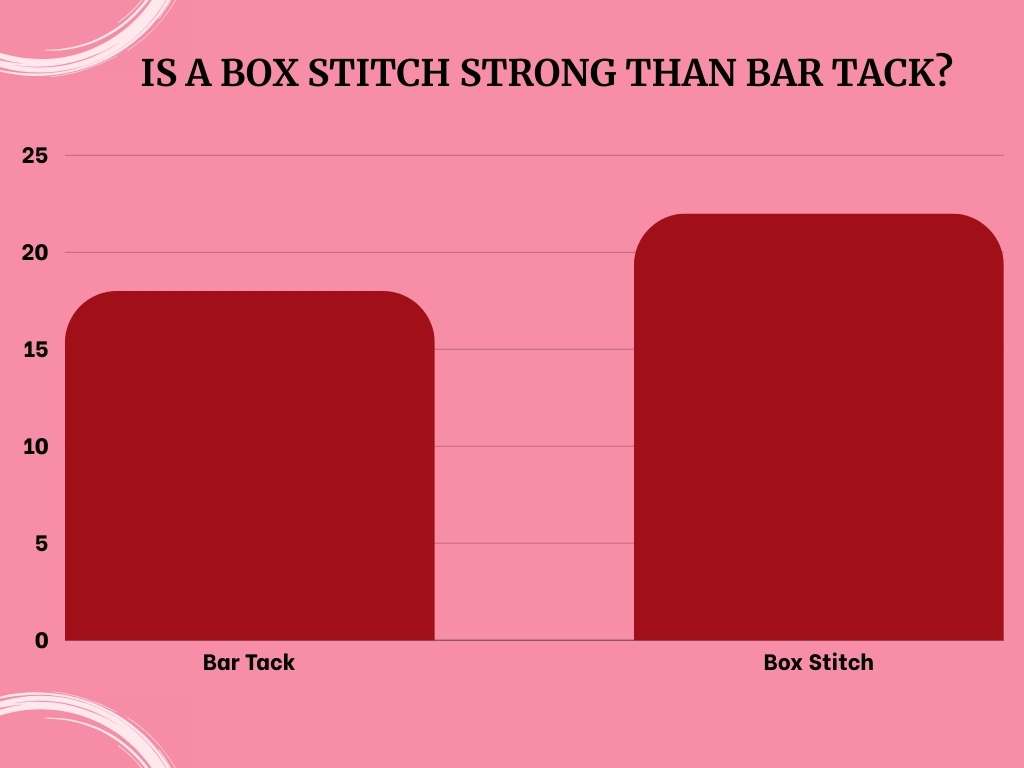
While both stitches have their uses, bar tacks are usually stronger and better for those high-stress spots. Box stitches are great for more decorative or lighter applications.
So, What kind of projects are you working on that got you thinking about these stitches?
Bar Tack Vs Box Stitch Vs Webbing
Should there be any comparison between them? 🤔 They are whole different things. Bar tack and box stitch are kinds of stitches. But webbing? What kind of stitches are there?
Webbing is a kind of fabric, not a stitch. You must have mixed them up. 😁 No worries; it happens.
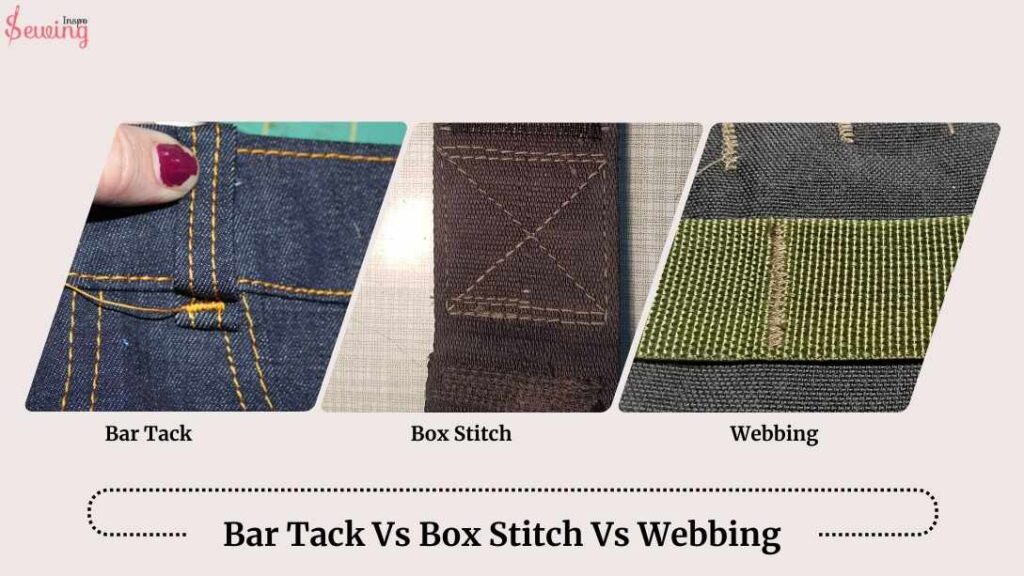
Webbing strap is a type of fabric made from woven nylon, polyester, or similar materials. It is known for its durability and strength. Webbing is often used in belts, straps, and outdoor gear.
Webbing doesn’t require stitches for reinforcement in the same way that fabrics do because it’s already very strong. However, when it comes to sewing wobbling stitching like bar tacks or box stitches is commonly used.
Or you can say bar tack and box stitch is typically used in webbing.
Bar Tack Vs Box Stitch Shoulder
The box stitch shoulder process involves creating small, square stitches to reinforce and add texture to shoulder seams, enhancing durability and visual appeal.
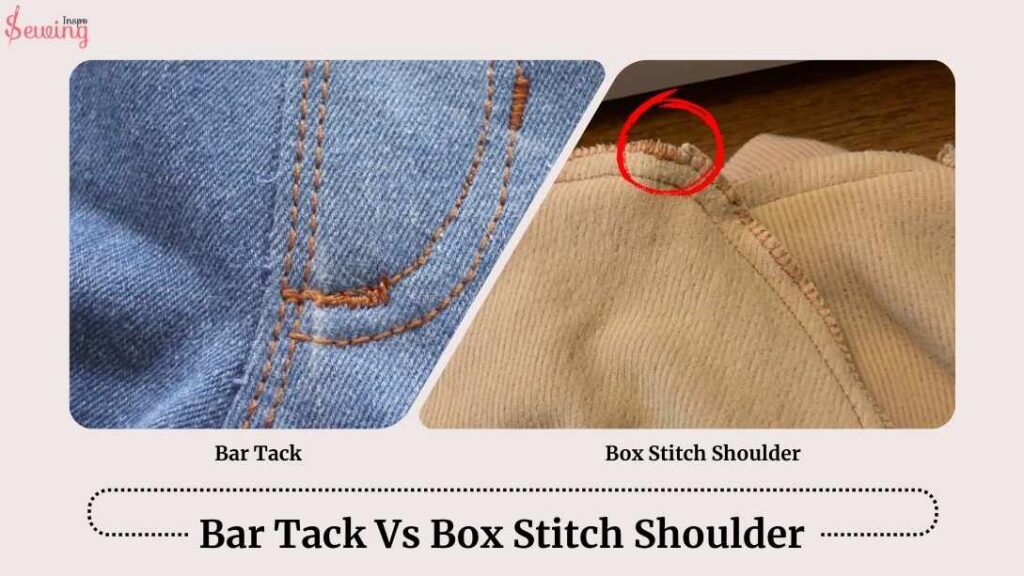
Both are kind, but still, there are a few differences as in:
| Topic | Bar Tack | Box Stitch Shoulder |
| Purpose | Reinforcement of high-stress areas | Decorative and structural support |
| Stitch Design | Closely spaced zigzag stitches | The square or rectangular stitching pattern |
| Strength | Very strong, designed to prevent tearing | It provides good strength but less than bar tack |
| Common Uses | Pocket corners, belt loops, fly openings | Shoulder seams in shirts and jackets |
| Visual Appeal | Minimalistic, often not visually prominent | Adds decorative detail to the garment |
| Application | Primarily functional | Combines function with style |
| Durability | Excellent for heavy wear and tear | Durable, but mainly for lighter applications |
Frequently Asked Questions(FAQ’s)
What Is The Primary Purpose Of A Bar Tack Compared To A Box Stitch?
The primary purpose of a bar tacks stitch pattern is to reinforce high-stress areas in garments, such as pocket corners and belt loops, to prevent tearing and fraying. In contrast, a box stitch is often used for decorative purposes or to join pieces of fabric together. It provides decent strength but is not specifically designed for high-stress applications.
Can I Use A Box Stitch In High-Stress Areas Instead Of A Bar Tack?
While you can use a box stitch in high-stress areas, it’s not the ideal choice. Box X stitch patterns are better suited for decorative applications or lighter use. At the same time, bar tacks are specifically designed for reinforcement in areas prone to wear and tear. If durability is a concern, it’s best to stick with bar tacks for those high-stress areas.
Outro
bar tacks vs box stitches serve different purposes in sewing. Bar tacks are ideal for reinforcing high-stress areas. And box stitches add a decorative touch and offer decent strength for lighter applications. Understanding when to use each stitch will enhance both the durability and style of your projects.
If you are wondering how to start a stitch by hand, visit our hand stitch category for hand-sewing tutorials.
Learn with ease.


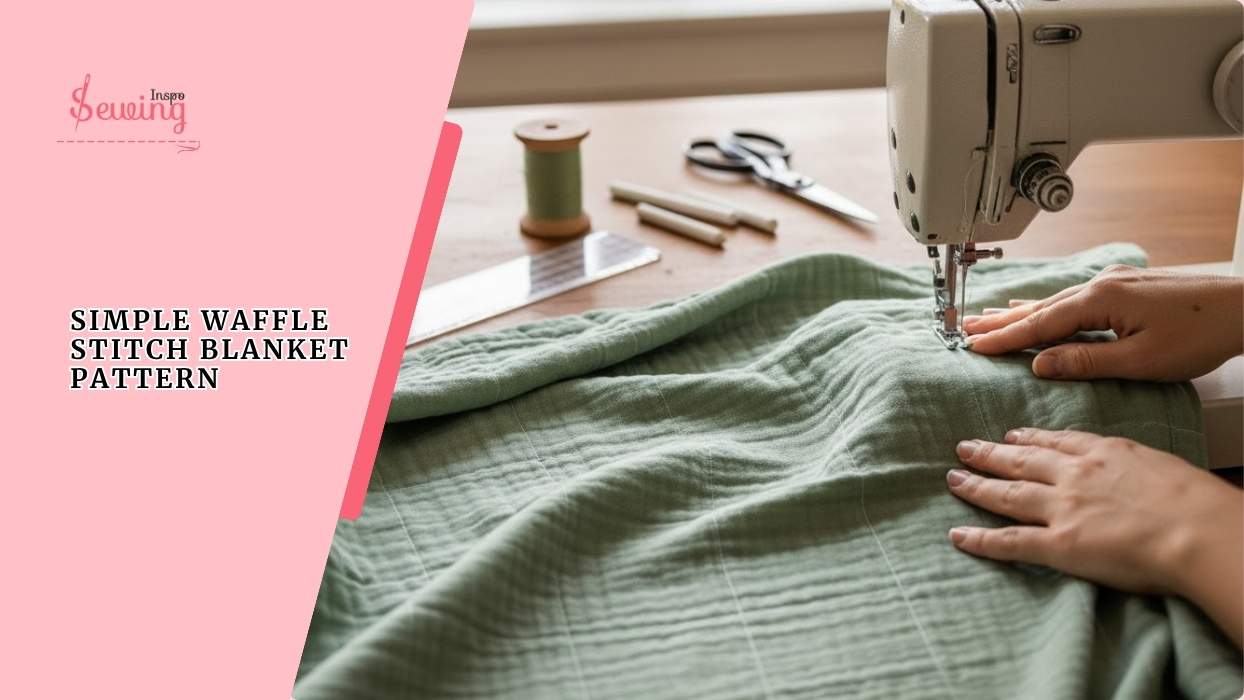
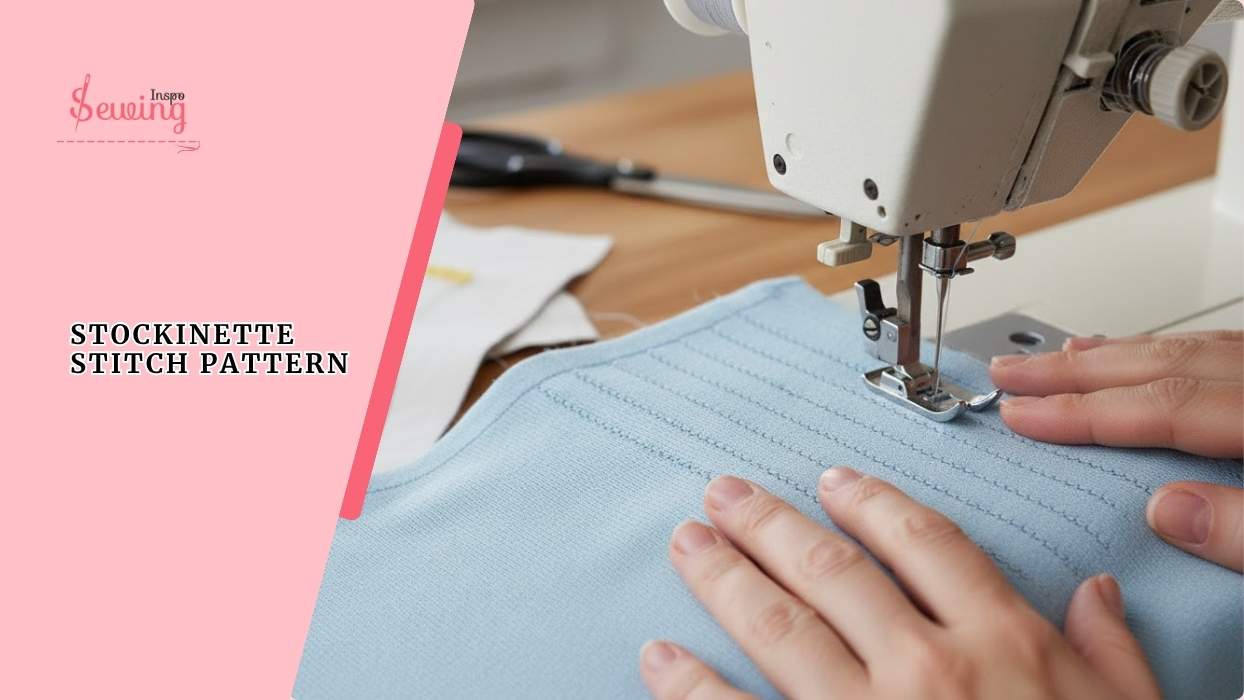
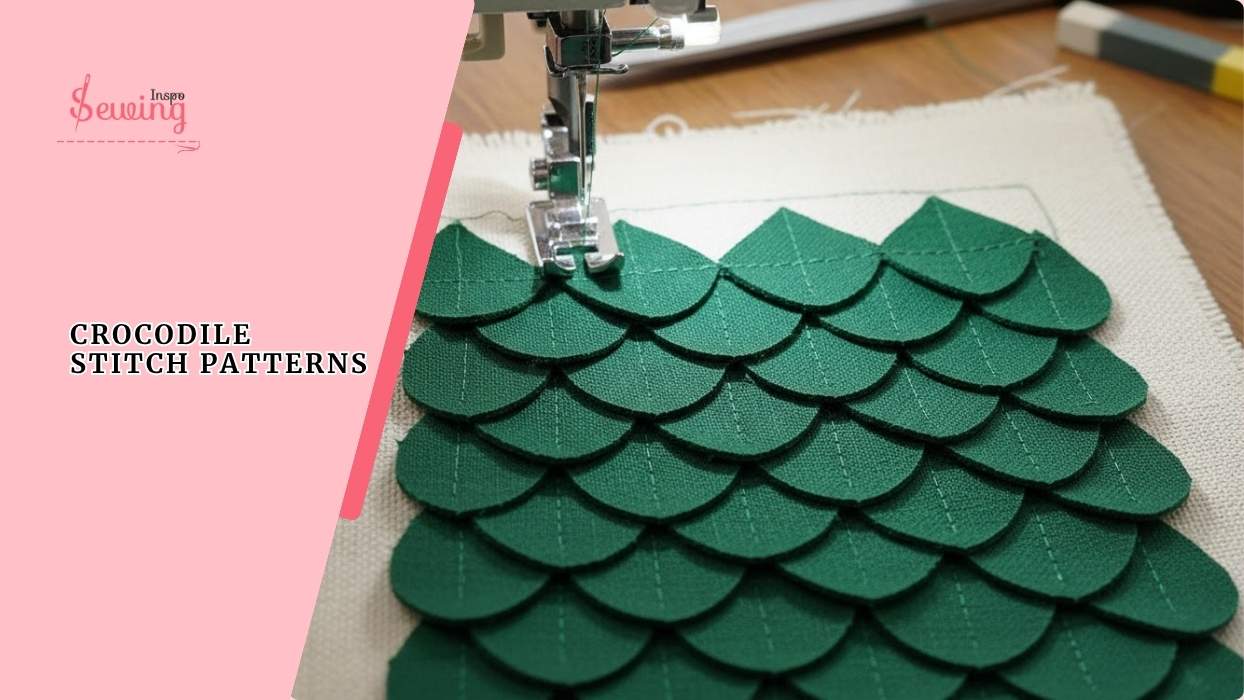
Leave a Reply